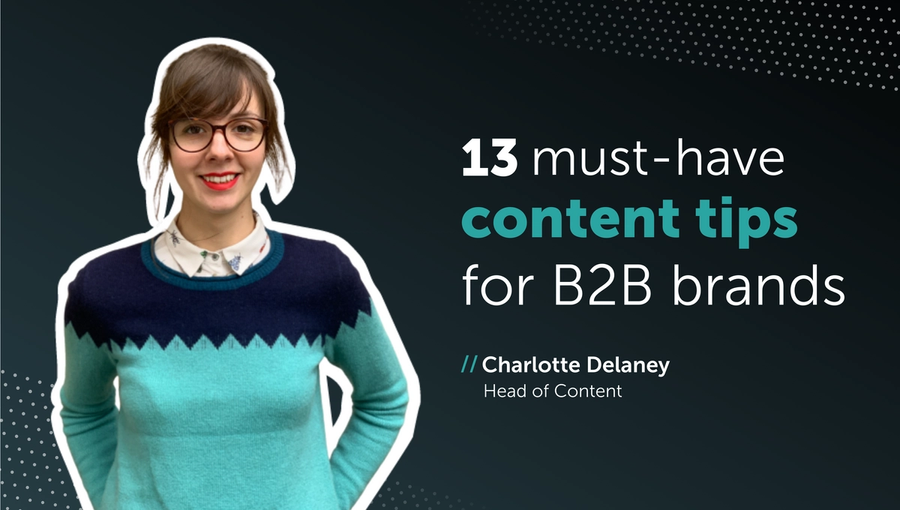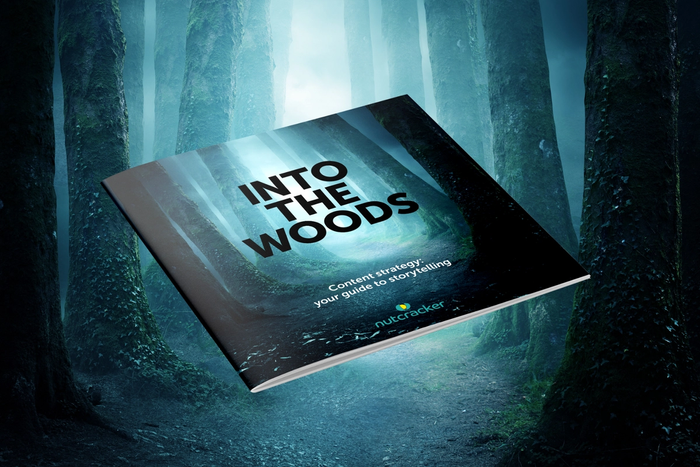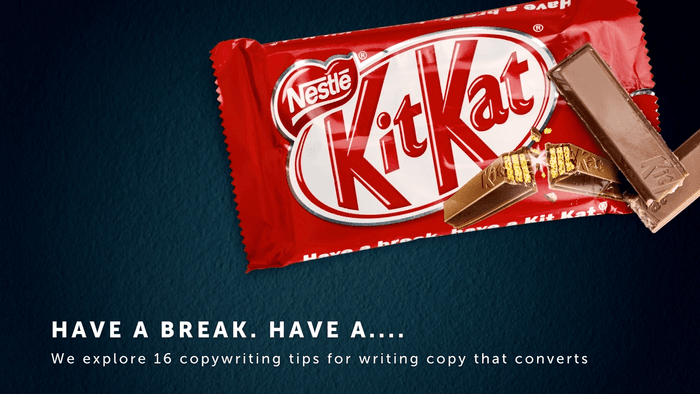Content Marketing & SEO
13 must-have content tips for B2B brands
Get content wrong and it’s pointless. It’s raindrops in the ocean. Needle in a haystack. Lost among the millions of words uploaded to the internet every day.
Get your content marketing right and it’s the centre point of your marketing strategy. It provides ammunition for the rest of your marketing outreach. It opens doors for your sales team. It brings leads to you.
So, what makes great content? Here are my top tips:
Hook ‘em in with your headline
It doesn’t matter if your content is brilliant, if your headline isn’t. Your headline’s job is to get people to read the rest, so it’s got to be good. What makes a good headline? I wish I could tell you, but really, it depends on your audience, your platform, your brand, your purpose. You might go for something that’s catchy, or intriguing, or something that suggests there is must-have information to be read. I hate to say it but, as awful as clickbait is, some of those headlines just work (if you can back it up with satisfying content).
Remember your SEO….
Keywords, backlinks, meta descriptions, all of those things that our digital marketing team nag me about. They are important. They will make sure that the right people can find your content, drive up your rankings, and increase your visibility online.
But remember SEO isn’t everything
Yes, ticking the right SEO boxes is going to make your content easier to find. But you also want people to read it. Treat your content like an SEO checklist, nothing more, and you won’t get the full benefit from it. Content has huge inbound potential, not just as a search device but as a way to connect, engage and inspire action. Make sure it fulfils all of these important tasks.
Don’t be lazy with your copy
You can write a blog in half an hour. Sometimes, that’s all it needs. Often, it isn’t. You are competing with well over 570 million blogs and counting. Half-baked content that skims the surface and doesn’t present anything new, or interesting, is not going to cut it. Sure, you might tick off your SEO quota, and people might click through if you have a cracker of a headline, but it won’t entice people back. Take the time, put in the energy, think about your angle, and think about what your reader really wants to get from it.
Don’t be dull with your writing style
I’m not saying you need to go full Gonzo on every article, but at least try to make sure the content you put out has a bit of spark, or no one will read it to the end. Again, there is so much content out there, all vying for attention. Give them a fresh approach, an interesting fact. Make them laugh. Make them think. Make them feel something. Use analogy. Drop in emotive language. Make it interesting and enjoyable. This includes you, B2B brands – the time when ‘B2B’ meant ‘boring’ is well and truly over.
Create a connection with your audience
Think of your content as a conversation with your audience. How would you or your team create a connection? Think about what you’d say and how you’d say it (your tone of voice). Your content should reflect your brand by speaking a language that connects with your audience, reflects your brand’s character, and relates to their pain points and challenges. It’s an opportunity to show that you understand their needs and are the people they want to work with.
Drop the jargon
I don’t care if it’s a word that everyone in your industry uses. It has no place in your marketing copy. Jargon makes everything feel heavy. It requires just that bit of extra effort to digest. It switches readers off, sending them elsewhere to find the meaning of the word (or a blog that explains it better). Keep language precise and simple, especially if you are introducing a new idea/product/technology or are engaging with a new audience.
Think about your content format
You have something – a new product, a service, a concept – that you want to communicate. Is a blog the right answer? Or is there another method that will make the idea ‘click’ with your audience. It could be an infographic, it could be a TikTok, it could be a YouTube tutorial, it could be an Instagram series. Content doesn’t have to be words on a page – it’s about communication.
Show, don’t tell
A picture is worth a thousand words, they say. As a writer, I hate this, but I also know it’s true. If you can show, rather than tell, do it: you’re trying to capture the attention of some very busy people, in a veritable ocean of content. The right image can hook them in and convey an idea quickly. You can then use the rest of your content to reel them in – expanding on that initial attention-grabbing image.
My additional tip here is to work with your design team. Don’t just pass the baton: collaborate, bat some ideas back and forth, think about how design and words marry together, and you’ll end up with visual content that has purpose and meaning.
Call your reader to action
Think about what you want the reader’s next step to be once they’ve read the blog/watched the video/etc. Do you want them to buy your product? Get in touch with your team? Subscribe to your newsletter?
That said, you should remember that your CTA doesn’t need to be an aggressive sell. If it’s part of a bigger campaign, the ‘action’ might be to engage further with your content, or connect on social media. Inbound content is often part of a ‘long game’, building trust and awareness over time. This is vital if you’re selling high-value, high-concept products or services: no one is going to spend tens of thousands on software because they liked your blog.
Proof everything
Public. Dock. Duck. Skit. The occasional typo probably isn’t going to bring your business to its knees, but sometimes, they can do a bit more damage. A missing comma or a stray letter can change the meaning of a word or phrase, like this clanger that was very deftly handled by Innocent drinks recently. Innocent may have succeeded in turning their typo into a humorous gaffe, but they can be more serious – especially if you’re in a heavily regulated industry, like manufacturing, healthcare or insurance.
Aside from that, typos are just annoying. They can be jarring: a ‘snag’ in the reading experience. They can make content feel less professional. They can impact the reader’s trust in what you have to say (if you haven’t checked it for a stray apostrophe, have you checked it at all?). Keep them out of your content (especially – need we say it – on your website homepage).
Tell a story (that’s not about me, me, me)
Everyone’s talking about storytelling. Few people know how to do it. Your content should be spinning a story around your customer, not your brand. Yes, a brand’s story can be interesting and relatable, but usually, no one is going to give a tuppence about why you started the business in 2017. They care about themselves – they want to know how you are going to help them. They are the hero, not your business. You can read more about this in our storytelling guide.
Appoint an agency and outsource your content
Render all of the above redundant by appointing someone else to take care of content for you. Preferably an award-winning marketing agency that do all of the things on this list, and more. Specifically, us. Nutcracker’s content team is made up of former journalists, PR specialists, and experienced, talented copywriters. We do more than chuck words on a page – we work with clients and the rest of the Nutcracker team to create content that underpins sales, raises awareness and gets people interacting with your brand. We’ve created content and led campaigns for some incredible brands – to find out what we did, and how it worked, email us hello@nutcrackeragency.com or call 0203 941 0305.
Share this:




